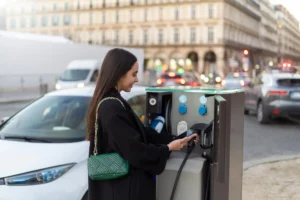
Home / EV Charging News / The Impact of Electric Cars on Energy Distribution: Navigating Challenges and Harnessing Opportunities for Evolving Electricity Grids
As the automotive industry steers towards a greener future, electric vehicles (EVs) have emerged as a pivotal solution to reduce carbon emissions. However, this shift towards electric mobility also has far-reaching implications for energy distribution systems. This article delves into the intricate interplay between electric cars and energy distribution, exploring the challenges and opportunities that arise as EV adoption grows and charging demands increase.
As electric cars transition from a niche choice to a mainstream mode of transportation, their integration into energy distribution systems necessitates collaborative efforts. Governments, utility providers, EV manufacturers, and consumers must work together to ensure that EV adoption aligns with grid capacity and sustainability goals. The road ahead involves a harmonious balance between technological advancement, policy support, and responsible charging practices—a balance that will not only drive us towards a greener tomorrow but also lay the foundation for a resilient and interconnected energy landscape.
The electrification of transportation isn’t merely about switching fuels; it’s about orchestrating a harmonious transformation of energy systems. As electric cars roll onto the streets, they become not only vehicles of transportation but also agents of change within the energy sector. By acknowledging the challenges and seizing the opportunities presented by EV adoption, we can pave the way for an electrified, sustainable, and resilient future—one where electric cars power not only individual journeys but also the transformation of our energy infrastructure.
The synergy between electric cars and energy distribution systems stands as a testament to human innovation and adaptability. As the world accelerates towards a cleaner transportation paradigm, it’s crucial to address the challenges posed by EV charging demands while leveraging opportunities for grid enhancement. By embracing smart grid solutions, V2G integration, and renewable energy synergies, societies can ensure that the electric vehicle revolution not only drives us towards a sustainable future but also paves the way for a more resilient and intelligent energy ecosystem.
